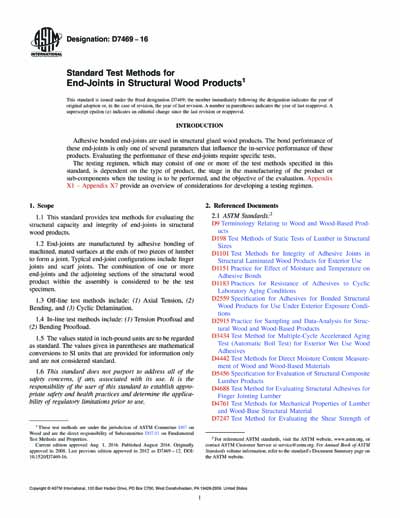Historical
ASTM D7469-16
Standard Test Methods for End-Joints in Structural Wood Products
1.1 This standard provides test methods for evaluating the structural capacity and integrity of end-joints in structural wood products.
1.2 End-joints are manufactured by adhesive bonding of machined, mated surfaces at the ends of two pieces of lumber to form a joint. Typical end-joint configurations include finger joints and scarf joints. The combination of one or more end-joints and the adjoining sections of the structural wood product within the assembly is considered to be the test specimen.
1.3 Off-line test methods include: (1) Axial Tension, (2) Bending, and (3) Cyclic Delamination.
1.4 In-line test methods include: (1) Tension Proofload and (2) Bending Proofload.
1.5 The values stated in inch-pound units are to be regarded as standard. The values given in parentheses are mathematical conversions to SI units that are provided for information only and are not considered standard.
1.6 This standard does not purport to address all of the safety concerns, if any, associated with its use. It is the responsibility of the user of this standard to establish appropriate safety and health practices and determine the applicability of regulatory limitations prior to use.
Content Provider
ASTM International [astm]






